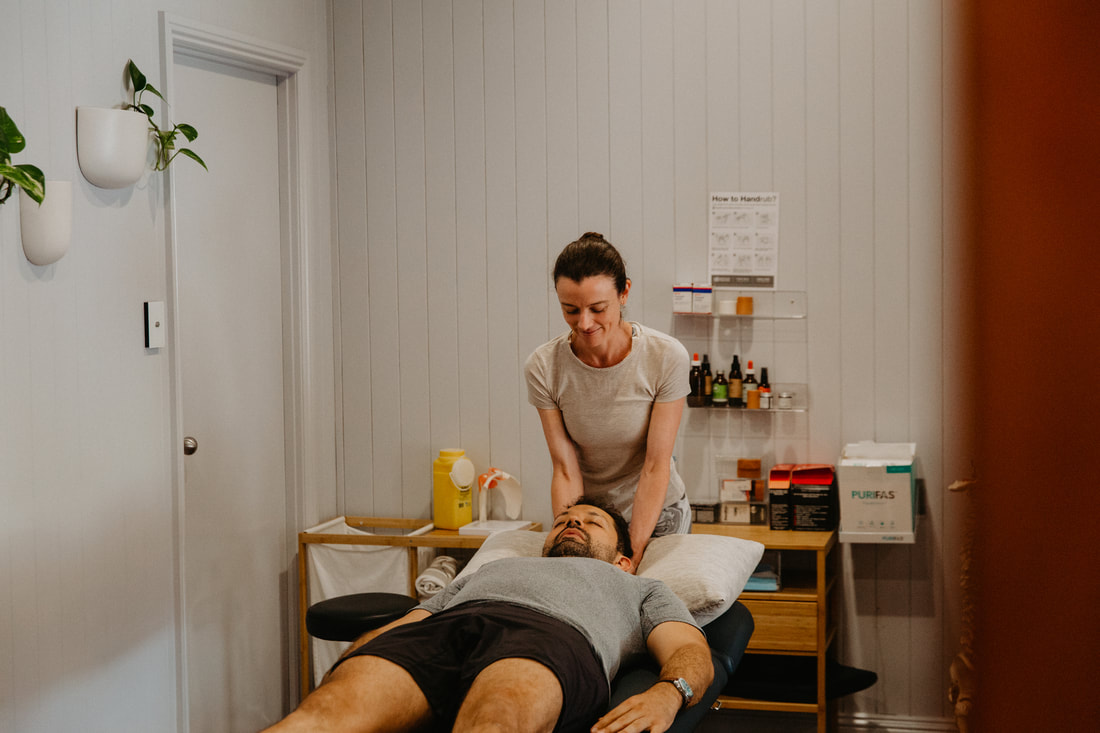Cervical Radiculopathy Physiotherapy Brisbane southside.
What is Cervical Radiculopathy?
Cervical radiculopathy is a medical condition characterised by the compression or irritation of a nerve root in the cervical spine (neck). This condition typically results in pain, numbness, tingling, or weakness that radiates along the path of the affected nerve.
What causes Cervical Radiculopathy?
Cervical radiculopathy is often caused by:
What are the symptoms of Cervical Radiculopathy?
The symptoms of cervical radiculopathy often include:
How is Cervical Radiculopathy diagnosed?
Diagnosis typically involves:
What is the treatment for Cervical Radiculopathy?
Treatment options for cervical radiculopathy may include:
What is the prognosis for Cervical Radiculopathy?
The prognosis for cervical radiculopathy varies depending on the cause, the severity of nerve compression, the effectiveness of treatment, and individual factors. Many people experience significant relief with appropriate management, while others may have persistent symptoms.
How is Cervical Radiculopathy prevented?
Preventing cervical radiculopathy often involves practicing good neck health, maintaining proper posture, avoiding activities that strain the neck, and using protective gear during activities that carry a risk of injury.
How can physiotherapy help with Cervical Radiculopathy?
Physiotherapy can play a significant role in the management of cervical radiculopathy by addressing pain, improving mobility, and promoting long-term neck and arm health. The goals of physiotherapy for cervical radiculopathy are to reduce symptoms, enhance nerve function, improve strength and flexibility, and prevent further complications. Here's how physiotherapy can help with cervical radiculopathy:
The specific approach to physiotherapy for cervical radiculopathy may vary depending on the individual's symptoms, the cause of the condition, and the stage of recovery. It is important for individuals with cervical radiculopathy to consult with a healthcare provider, such as a physiotherapist, for a thorough evaluation and personalised treatment plan. Early intervention and adherence to recommended exercises and lifestyle modifications can significantly improve outcomes for those with cervical radiculopathy.
If you or a loved one has questions about Cervical Radiculopathy and how our physiotherapists might be able to help please call us on 07 3706 3407 or email [email protected]. We would love to work with you!
Cervical radiculopathy is a medical condition characterised by the compression or irritation of a nerve root in the cervical spine (neck). This condition typically results in pain, numbness, tingling, or weakness that radiates along the path of the affected nerve.
What causes Cervical Radiculopathy?
Cervical radiculopathy is often caused by:
- Herniated disc: When a disc in the cervical spine ruptures or bulges and presses on a nerve root.
- Degenerative changes: Age-related wear and tear, such as the formation of bone spurs (osteophytes) or degenerative disc disease, can narrow the spaces around nerve roots.
- Spinal stenosis: The narrowing of the spinal canal can compress nerve roots.
- Trauma: Injuries such as whiplash or neck fractures can damage nerve roots.
- Tumours or infections: These rare causes can also lead to radiculopathy.
What are the symptoms of Cervical Radiculopathy?
The symptoms of cervical radiculopathy often include:
- Sharp or shooting pain in the neck, shoulder, and arm.
- Numbness or tingling in the arm or hand, following a specific nerve pathway.
- Muscle weakness in the arm or hand.
- Diminished reflexes in the affected arm.
- Difficulty with fine motor skills and coordination.
- Radiating pain down the arm.
How is Cervical Radiculopathy diagnosed?
Diagnosis typically involves:
- Medical history: Including a description of symptoms and any relevant injuries.
- Physical examination: To assess muscle strength, reflexes, and sensory function.
- Imaging studies: Such as X-rays, magnetic resonance imaging (MRI), or computed tomography (CT) scans to visualise the spine and confirm the presence and extent of cervical radiculopathy.
What is the treatment for Cervical Radiculopathy?
Treatment options for cervical radiculopathy may include:
- Conservative treatment: This often includes rest, physical therapy, and pain management with medications such as non-steroidal anti-inflammatory drugs (NSAIDs) or muscle relaxants.
- Physical therapy: To improve neck and upper back muscle strength, enhance posture, and maintain range of motion.
- Epidural steroid injections: These may be used to reduce inflammation and relieve pain.
- Lifestyle modifications: Such as maintaining good posture, avoiding activities that strain the neck, and regular exercise.
- Surgical intervention: In cases where conservative measures are ineffective or if there is significant nerve compression, surgery to relieve pressure on the nerve root may be considered.
What is the prognosis for Cervical Radiculopathy?
The prognosis for cervical radiculopathy varies depending on the cause, the severity of nerve compression, the effectiveness of treatment, and individual factors. Many people experience significant relief with appropriate management, while others may have persistent symptoms.
How is Cervical Radiculopathy prevented?
Preventing cervical radiculopathy often involves practicing good neck health, maintaining proper posture, avoiding activities that strain the neck, and using protective gear during activities that carry a risk of injury.
How can physiotherapy help with Cervical Radiculopathy?
Physiotherapy can play a significant role in the management of cervical radiculopathy by addressing pain, improving mobility, and promoting long-term neck and arm health. The goals of physiotherapy for cervical radiculopathy are to reduce symptoms, enhance nerve function, improve strength and flexibility, and prevent further complications. Here's how physiotherapy can help with cervical radiculopathy:
- Pain Management: Physiotherapists can use various techniques to help alleviate pain and discomfort associated with cervical radiculopathy. These may include heat or cold therapy, electrical stimulation, and manual therapy to reduce muscle tension and inflammation.
- Nerve Gliding Exercises: Physiotherapists may prescribe specific exercises to gently mobilise and stretch the affected nerve roots. These exercises can help reduce nerve compression and alleviate symptoms like tingling and numbness.
- Range of Motion Exercises: Physiotherapists design exercises to improve neck and upper back mobility, as restricted motion can exacerbate symptoms. Gentle neck stretches and mobility exercises can help maintain range of motion.
- Strengthening Exercises: Strengthening exercises target the muscles in the neck, shoulder, and arm. By improving muscle strength, these exercises can provide better support to the spine and reduce the risk of further nerve compression.
- Posture Correction: Poor posture can contribute to neck pain and worsen cervical radiculopathy symptoms. Physiotherapists provide guidance on maintaining good posture during daily activities and may teach exercises to promote better alignment.
- Manual Therapy: Hands-on techniques like joint mobilisation and soft tissue massage can be used to relieve muscle tension, improve joint function in the neck and upper back, and reduce pain.
- Cervical Traction: In some cases, cervical traction may be employed to gently stretch the neck and relieve pressure on the cervical spine. This can help reduce pain and improve nerve function.
- Functional Rehabilitation: Physiotherapists work with patients to help them regain the ability to perform daily tasks and activities without exacerbating symptoms. This includes teaching proper body mechanics to prevent strain on the neck and nerves.
- Education: Physiotherapists educate patients about their condition, including the healing process and strategies for self-management. This education includes advice on posture, ergonomics, and techniques for preventing further strain on the neck and nerve roots.
- Home Exercise Program: Patients are usually given a customised home exercise program to continue their rehabilitation independently. Consistent adherence to these exercises is crucial for long-term recovery.
The specific approach to physiotherapy for cervical radiculopathy may vary depending on the individual's symptoms, the cause of the condition, and the stage of recovery. It is important for individuals with cervical radiculopathy to consult with a healthcare provider, such as a physiotherapist, for a thorough evaluation and personalised treatment plan. Early intervention and adherence to recommended exercises and lifestyle modifications can significantly improve outcomes for those with cervical radiculopathy.
If you or a loved one has questions about Cervical Radiculopathy and how our physiotherapists might be able to help please call us on 07 3706 3407 or email [email protected]. We would love to work with you!
Who to book in with:
Yulia Khasyanova
|
Emma Cameron
|
Monica Hanna
|



